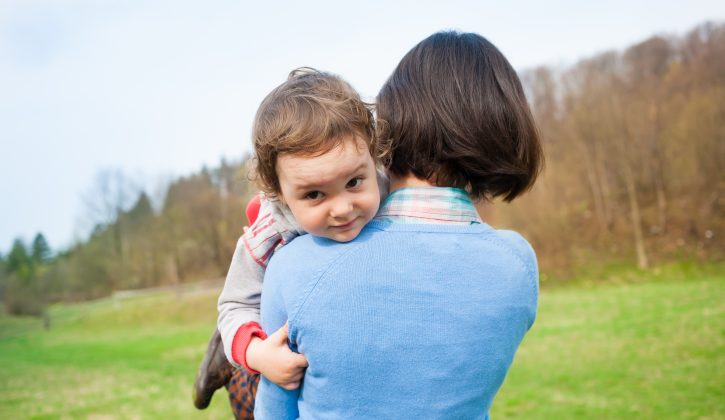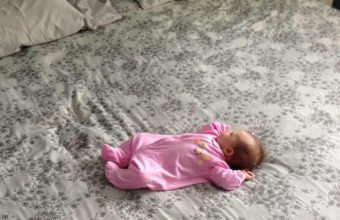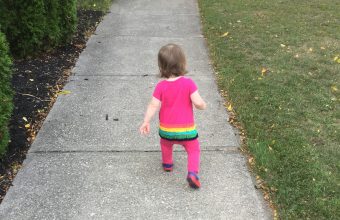I always carried my babies on my left side. As newborns, my left shoulder was their warm, safe and secure place. Even when they got to be wriggling toddlers, they were to be found perched on my left hip. Trying to hold them on the right side felt as unnatural as brushing teeth with the non-dominant hand, or driving on the other side of the road.
I never thought about the reason for this, until a recent study came out asking just that question. See, turns out that I’m not the only mom to favour the left side for baby comforting and transportation. Studies have shown that 70-85% of females (including girls) show a preference for holding babies (or, in the case of girls, dolls) on the left. For males, Dads also show the bias for the left side but males who aren’t proud papas revealed no preference.
So the scientists looked at all the variables that pop into mind, including the left side being where the heart is, keeping the right hand free, and even breast sensitivity, but found no correlation.
It’s All in Your Head
What they finally did find is that the connection stems from the brain. When we hold our babies on the left side, the ride side of the parent’s brain is physically activated—it basically lights up like a pinball machine. This activation helps the parent bond with baby.
The right side of the brain is involved in language and identifying and responding to emotional signals—all things that are important for responding to a baby’s cues. When we hold our babies on the left, that whole process is optimised. According to the journal Nature Ecology and Evolution, we’re better able to monitor and nurture babies because when we hold our babies on the left, we’re creating an efficient pathway of sensory input right to where it needs to go—the right side of the brain.
Lefties in the Animal Kingdom
We’re not the only mammals that show a preference for the left side. Lots of mammals, including wild horses, reindeer, walruses, kangaroos and whales show a bias for keeping their offspring to their left. What’s more, infants of those species, when given a choice, scamper over to the left of their parents. It’s probably important to their survival to be well connected to their parents for food and protection.
What Does It Mean
We know it is important for parents to develop a close bond with our babies. It’s good for infants and it’s good for mamas and papas too. It also feeds into the attachment theory of parenting—basically that when babies feel safe, they grown up feeling secure and loved and these benefits extend into adulthood. Figuring out what our babies need isn’t always easy, and any help is appreciated.
So even if we feel like pregnancy or mom brain has turned our neurons into mush, even the simple act of carrying our kiddos on the left side is lighting up the right side of the brain and promoting excellent monitoring and response to our baby’s cues.
And it leaves your right hand free for car keys, latte, purse, phone, and diaper bag, also all to our evolutionary advantage. Especially the latte.
Tagged under: Parenting,babies,science,motherhood,infants
Category: parenting






